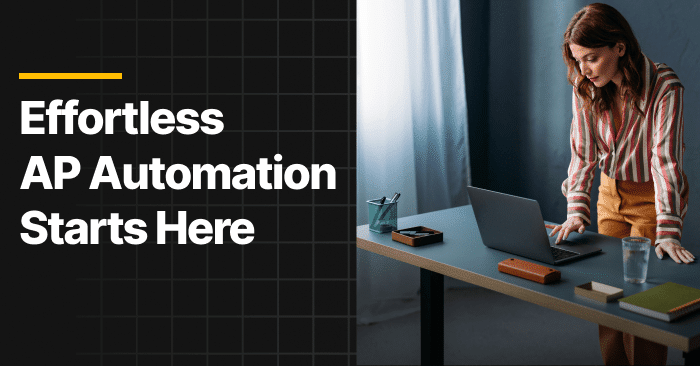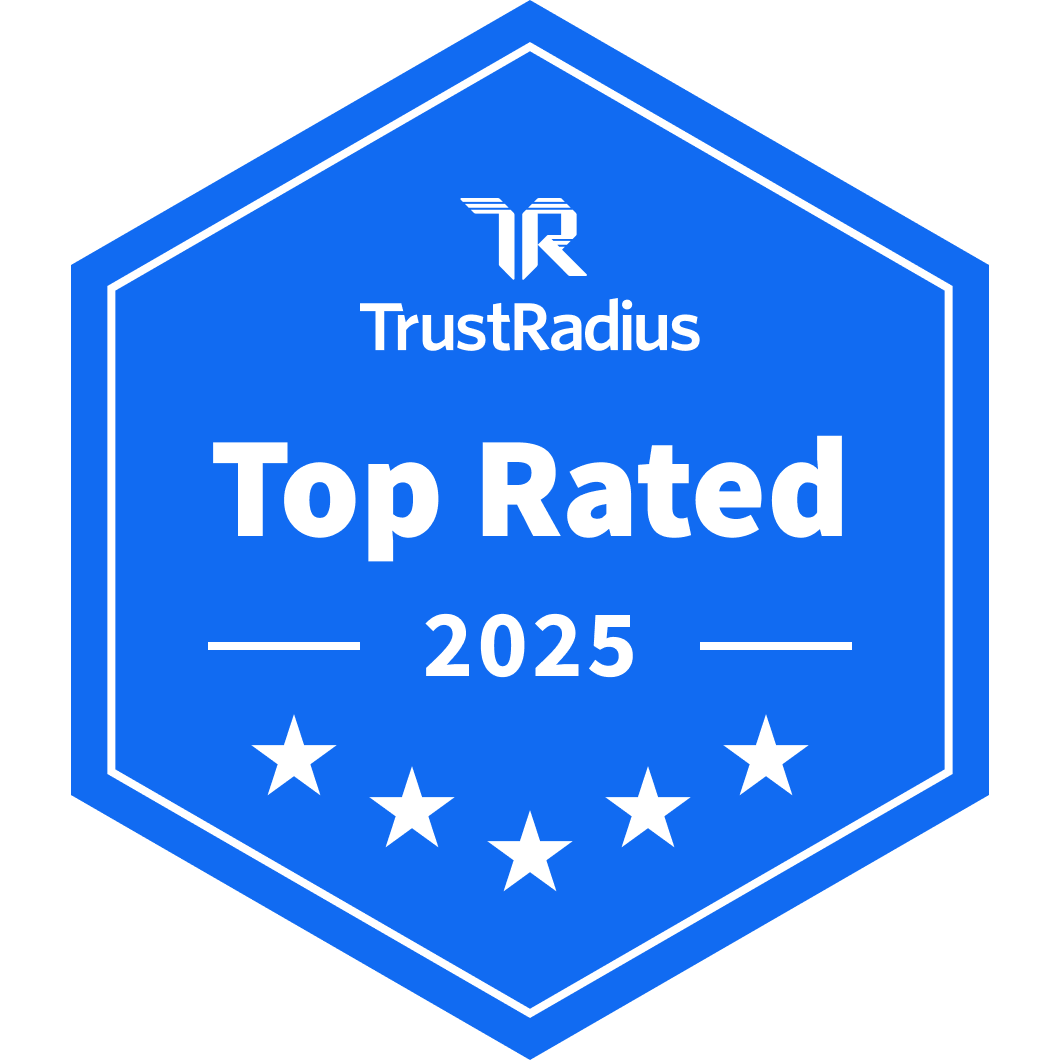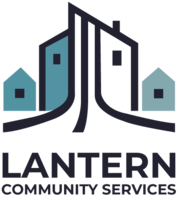
Save time and empower your finance team with Tipalti. The most complete AP solution loved by 5,000+ businesses.
Your accounts payable software is more than a back-office tool. The right solution is essential for accurate and timely supplier payments, fewer errors, stronger business relationships, and freeing up your finance team for strategic work.
However, with so many invoice tools and payment platforms on the market, finding one that truly scales (while offering the visibility, compliance, and ERP integration needed in 2025) can be challenging. To make the decision easier, we’ve curated a list of the 9 best accounts payable software that can help automate approvals, ensure global compliance, streamline reconciliation, and improve cash flow as you grow. [Jump to the comparison]
Top 8 Signs You Need an Accounts Payable Software
- Manual Work is Overwhelming
If your invoice management consists of routing approvals via paper on a desk and manually uploading payments to a bank, it may be time for some automation. Manual tasks increase errors, slow payments, and negatively impact cash flow. Slow and error-prone invoice approvals will hurt your vendor relationships and delay payments.
- Decreased Visibility with Growth
As your payment volume grows, so does the chaos and complexity. A business begins to lack real-time insight into critical data points like approval status, liabilities, and cash flow. Without transparency, it’s harder to close the books on time or forecast future trends.
- Continuous Payment Errors
Is your team continually making duplicate or erroneous payments? Manual processes always increase the risk of paying the same invoice twice or, worse, paying the wrong amount (thus upsetting vendors).
- Legacy System Limitations
Is your AP process separate from the ERP? This means reconciliation and reporting are a constant battle of consolidation. The lack of integrated and connected systems leads to inconsistencies, delays, and higher risks of an audit. Manual-laden tools like spreadsheets and email-based approvals worked when your business was smaller, but now they hold you back. Enterprise-grade AP automation easily manages high volume, complexity, and compliance as you scale.
- Lack of Internal Controls
If your approvals aren’t standardized and trackable, enforcing policies and meeting compliance standards is harder. A lack of robust financial controls leads to a higher error rate, fraud, and unauthorized payments.
- Legacy Bottlenecks
Do only a few team members know how specific AP processes work? This creates a very risky skill bottleneck. A scalable and automated system will reduce the reliance on tribal knowledge.
- Global Payment Challenges
If your business struggles to expand because making global payments is difficult, it may be time for an automated system. International payments involve complex tasks such as currency conversion and regulatory compliance. AP software can help you quickly address these issues.
- Slow Month-End Close
If AP is consistently delayed at month-end, it’s likely due to the bottlenecks caused by manual data entry, approvals, and/or reconciliation. Automating these tasks eliminates that risk and ensures a faster month-end close.
Additional Pain Points:
- Managing multiple entities or global vendors has become a challenge.
- You don’t have the tools for tax compliance, exposing your business to audit risk.
- Vendor payment inquiries are distracting AP from more strategic work.
What is Accounts Payable Software?
Accounts payable (AP) software is designed to automate business payment processes from start to finish by leveraging instructions customized to each business process. The software filters, categorizes, matches, and validates critical accounting information pushed through the accounting system to be recorded.
Key benefits of accounts payable software include:
- Faster invoice processing
- Increased efficiency and accuracy
- Enhanced cash flow
- Reduced risk and stronger compliance
- Highly scalable with greater cost savings
- Integrates with existing ERPs
AP is also an umbrella term for niche software that serves specific functions under the AP category. For example, enterprise resource management (ERP) systems like NetSuite and AP automation solutions like Tipalti are AP software solutions. AP teams implement accounts payable solutions to process, record, and pay discounted vendor invoices.
Accounts payable software may require manual tasks like data entry and matching paper invoices with purchase orders and receipts. However, the best cloud-based accounts payable automation solutions are designed to reduce these manual tasks by up to 80% by using electronic document data instead.
Additional AP software functions include:
- Processing and recording vendor invoices for purchases and services with trade credit terms
- Account coding of the short-term liability and the asset or expense
- Document matching
- Approvals
- Early payment discounts
- Pay bills
- Accounts payable aging and cash disbursement reports
- General ledger posting
AP automation software creates the ultimate automated accounts payable system by reducing accounts payable workload and human error.
Must-Have Features in Modern AP Automation Software
- Real-time automation:
An AP automation solution eliminates manual tasks by automating the entire end-to-end accounts payable process, helping companies speed up daily AP workflows.
- Invoice scanning and approval routing:
Leading AP automation software includes features like OCR invoice scanning (for data capture), automated invoice approvals, global cross-border payments, and document management.
- Advanced modules:
Strong solutions typically offer self-service supplier onboarding, built-in tax compliance, fraud prevention, discount optimization, PO matching, multi-currency global mass payments, and a myriad of secure payment methods.
- Reconciliation and visibility:
Tools like Tipalti provide automatic payment reconciliation, spend visibility, and cash management. This dramatically reduces manual data entry and eliminates the need for paper checks.
- Scalable AP:
Using the right AP software, organizations can create a fully integrated, automated AP system designed for timely payments, improved financial controls, and maximized efficiency.
Top 9 Accounts Payable Platforms to Consider in 2025
Quick Overview of the Top 9 AP Tools
| # | Solution | Best For | Pricing | Key Features |
|---|---|---|---|---|
| 1 | Tipalti | SMBs, mid-market, and enterprises. | $$ | Global payments and tax compliance, AI, ML, OCR, PO matching, mass payments, procurement, and ERP integrations. |
| 2 | Airbase | Startups and mid-market organizations that need unified spend management. | $$ | AP automation, corporate credit cards, multi-entity support, and real-time spend visibility. |
| 3 | AvidXchange | Mid-sized to large businesses with high invoice volume. | $$-$$$ | Advanced invoice capture and approval workflows, supplier network, and industry-specific integrations. |
| 4 | BILL | SMBs, freelancers, and accounting firms. | $-$$ | AP and AR automation, automated invoice approvals, ACH and check payments, vendor portal, QB and Xero integrations. |
| 5 | Concur | SMBs and enterprises that manage travel and expense workflows. | $$$ | Travel booking, automated expense reporting, mobile app, travel booking, global tax support, and SAP integrations. |
| 6 | Coupa | SMBs and enterprises focused on spend and procurement. | $$$ | Invoice management, procurement, contracts, AI-driven insights, compliance, and supplier collaboration. |
| 7 | NetSuite AP | SMBs and growing enterprises. | $$$ | Custom analytics and reporting, real-time insights, and wide module availability. |
| 8 | Quadient AP | Mid-sized businesses (especially in Canada and EMEA). | $$ | AP automation, smart invoice capture, multi-user collaboration, PO matching, approvals, and integrations with ERPs like QB and Sage. |
| 9 | Stampli | Organizations with complex AP communication needs. | $–$$ | AI-powered invoice collaboration, fast approvals, and real-time chat. |
Breaking Down the 9 Best Accounts Payable Software Platforms
Finding the right AP automation software setup ensures your AP system runs securely and efficiently. Here’s a breakdown of the nine best accounts payable software platforms on the market and the specific functions and types of companies they serve:
1. Tipalti
Tipalti is a cloud-based end-to-end AP automation solution that scales with you globally. The company offers top accounts payable automation features, including AI-based invoice automation (AI Smart Scan tool), PO matching, self-service supplier onboarding, global mass payables compliance, and automated invoice approval workflows with auto-routing.
The finance automation software gives your business a solid audit trail and offers features like bill pay, tax compliance, and fraud reduction to maintain compliant accounting practices.
Tipalti AISM advances finance automation by streamlining workflows, reducing manual tasks, and boosting productivity. From automated invoice capture and predictive auto-coding to intelligent approval routing and real-time reporting, Tipalti AISM empowers finance teams to move faster and work more accurately at scale.
Tipalti, a licensed money transmitter, also has a mass payments software product that works with its AP automation software.
Tipalti offers a platform that supports users across a number of scenarios, including:
- Invoice management and global payments
- Supplier management with tax compliance
- AI Report Builder for AP reporting and real-time reconciliation
- Smart ERP and accounting integrations
These ERP integrations help clients reduce AP workload by up to 80% and increase financial close by +25%. Tipalti also offers employee expense reimbursement software called Tipalti Expenses, which combines its AP automation software with purchase order management software (Tipalti Procurement).
Best for
High-growth potential small businesses, mid-market companies, and large enterprise companies that want to ease their AP workload
Price Range
$$
66% fewer payment errors. 25% faster close. 80% less AP workload.
2. Airbase
Based in San Francisco and founded in 2017, Airbase provides a unified spend management platform that seamlessly integrates accounts payable, expense management, and corporate cards. The company supports thousands of customers in over 100 countries.
Best for
Mid-market businesses that need to consolidate accounts payable, expense management, and corporate credit/debit cards.
Price Range
$$
3. AvidXchange
AvidXchange is an AP automation platform designed to process a high volume of invoices and payments. It works well for industries like construction, real estate, and utilities. The system offers tools for invoice capture, automated approvals, payments, and more.
Best for
Mid to large-sized businesses with a high volume of invoices and industry-specific needs.
Price Range
$$-$$$
4. BILL
BILL (Bill.com) is designed to automate simple accounts payable for SMBs by optimizing AP/AR processes, integrations, and digital payments. The system offers a simple UI with scalability that makes it popular among accounting firms.
Best for
SMBs and accounting firms that seek a short learning curve and ease-of-use for their AP and AR automation.
Price Range
$-$$
5. Concur
Acquired by SAP in 2014, Concur is a globally recognized leader in integrated travel and expense management with a strong focus on accounts payable. Headquartered in Washington, the platform supports more than 48,000 customers in over 150 countries and regions.
Best for
Concur works best for SMBs and enterprises that have complex travel and expense needs with limited AP tools.
Price Range
$$$
6. Coupa
Coupa offers a comprehensive suite of tools that includes invoicing, expense management, and supply chain visibility. The platform has enterprise-grade controls, predictive insights, and supplier collaboration, taking full advantage of artificial intelligence.
Best for
Large enterprises that seek complete control over AP, spend, and procurement.
Price Range
$$$
7. NetSuite AP
Part of Oracle’s full ERP suite, NetSuite AP provides real-time visibility into your cash flow, financial controls, and automated invoice processing. It typically works best for businesses that already use (or are planning to adopt) the NetSuite environment.
Best for
It works best for SMBs and enterprise organizations that are already in (or are transitioning to the NetSuite ecosystem.
Price Range
$$$
8. Quadient AP
Quadient AP (formerly Beanworks) is an end-to-end, invoice-to-payment automation platform that offers AP tools like OCR, PO matching, and robust audit trails. The system is known for a simple UI and advanced integrations with ERPs like QuickBooks and Sage.
Best for
Midsize companies in North America and the EMEA that need a simple user interface, AP automation, and strong integrations.
Price Range
$$
9. Stampli
Stampli combines AP communication, documentation, and payments into one collaborative platform. Its templates let you put all communications at the top of the invoices, so approvers, vendors, and other involved parties can instantly understand what needs to be done.
This enables 5x faster approvals, which results in fast payments. Stampli’s AI solution, Billy the Bot, also learns as it goes to make coding and notification automations more efficient.
Best for
All-sized companies with complex communications that need fast results
Price Range
$–$$
Accounts Payable Software by Business Size
1. Small Business Accounts Payable Software
Small business accounts payable software includes QuickBooks Online, BILL, Xero, and SAP Business One. You can start using mid-sized company software as a small business. Read our guide to the best accounts payable software for small businesses.
2. Midsize Business Accounts Payable Software
Accounts payable software for midsize businesses includes Tipalti, NetSuite AP, Sage Intacct, Microsoft Dynamics 365, Microsoft Business Central, Airbase, Quadient AP, AvidXchange, and Concur. For an in-depth breakdown of each solution, look at our article on Best Accounting Software for Midsize Businesses.
3. Accounts Payable Software for Large Businesses
Large enterprise businesses with big budgets use top-tier SAP S4/HANA, Coupa, and Oracle EPM Cloud ERP systems. As they grow, larger companies often use midsize accounts payable software products.
Accounts payable software, advanced FX, and payout solutions that also work for large companies include ERP-integrated Tipalti AP automation, Tipalti Multi-FX, FX Hedging, and Tipalti mass payments software.
Why Tipalti Is the #1 Alternative
| Feature | Tipalti Value |
|---|---|
| Global AP | Pays to 200+ countries, in 120 currencies, using 50+ methods. |
| Multi-Entity | Offers total transparency and visibility with a complete separation of workflows. |
| Tax Compliance | Global tax compliance with 62-country validation capabilities and over 3,000 rules. |
| ERP Integration | In-depth ERP integrations with leading platforms such as NetSuite, Intacct, SAP, and more than 50 other ERP and accounting systems. |
| Controls and Security | High-level security features with SOC 2, OFAC, AML, and detailed audit trails. |
| PO Matching and Automation | Advanced purchase order matching using AI tools like Smart Scan and auto-routing. |
Trusted by Finance Leaders. Backed by Industry Awards.


See what our customers are saying
Tipalti vs. Other AP Tools: What Sets Us Apart
While many AP automation platforms focus on invoice management and approvals, Tipalti stands out by offering a comprehensive, end-to-end global payables solution that’s designed to scale.
Here’s what sets Tipalti apart:
Multi-Entity and Multi-Currency Tools
Tipalti was built to streamline accounts payable workflows across multiple business units, subsidiaries, currencies, and local regulations. All from a single, centralized dashboard.
Global Tax Compliance
The system has a KPMG-approved tax engine that automates tax form collection (W-9, W-8, 1099, 1042-S, and VAT), validation, and eFiling.
In-Depth Integrations
Tipalti is a solution that offers seamless, real-time finance data syncs with ERPs like QuickBooks, Microsoft Dynamics, NetSuite, Sage, and more.
International Payments at Scale
Tipakti enables a business to pay suppliers in over 200 countries, using 120+ currencies, using over 50 different payment methods. The brand is fully licensed with OFAC screening and built-in fraud monitoring.
Self-Service Supplier Management
The system offers a custom-branded self-service vendor portal where they can onboard themselves, check on payment status, and select payment preferences.
End-to-End Solution
From OCR invoice capture to touchless approvals, reconciliation, compliance, and global payments, Tiaplti offers a true end-to-end automation solution that covers it all.
Award-Winning Platform
- G2 Leader – Accounts Payable and Global Payments
- #1 in ERP Integrations, Compliance, and Tax Handling
- Fintech 100: Fastest Growing Global Financial Tech Firms
Tipalti: Your Ideal AP Software Solution
Tipalti is an end-to-end AP solution built for finance teams needing more than invoice automation. It’s a unified system that scales with your organization, simplifies global payments, and ensures airtight compliance.
Key benefits include:
- Global tax and compliance: support for 200+ countries with a KPMG-approved tax engine.
- End-to-End automation: OCR invoice data capture, (2/3 way) PO matching, approval workflows, and mass global payments.
- Multi-entity management: centralized control across business units, subsidiaries, and currencies.
- ERP integrations: real-time sync with Sage, NetSuite, QuickBooks, and more.
- Self-service supplier portal: branded white-label onboarding, payment methods, and real-time status tracking.
When a business is looking to reduce manual work, speed up monthly close times, and scale with confidence, Tipalti is the solution finance leaders trust.
Final Thoughts: Invest in AP Software That Scales with You
Each solution offers its own strengths in AP automation, but only Tipalti delivers enterprise-grade capabilities built to scale.
While other tools might help with expense tracking or vendor payments, Tipalti takes it a step further by combining in-depth ERP integrations, international tax compliance, global payments, and powerful automation in one universal platform.
Manual finance processes slow down AP teams and drain resources. Tipalti will enhance existing ERPs, eliminating tedious workflows and freeing up time for more strategic initiatives.
Tipalti’s comprehensive approach to AP management provides end-to-end control. It optimizes your payables workflow, equipping your business to scale quickly and efficiently.
See how end-to-end AP automation can transform your financial processes
Tipalti helps finance leaders eliminate manual payables, increase global reach, and confidently scale.
Explore our customer success stories
FAQS
What is the return on investment for AP automation?
The ROI of AP automation usually comes from fewer errors, reduced manual processing, early payment discounts, and reduced risk.
The cost of manual invoice processing and payment averages $12 per invoice, although invoice management costs can range from $5 to $15-$20 per invoice. Automation speeds up monthly close and frees finance teams to focus on more strategic tasks.
Can AP software handle global payments and tax compliance?
Yes. Leading AP solutions like Tipalti support global payments (in 120+ currencies), OFAC screening, TIN validation, and tax form collection (W-9, W-8, 1099, 1042-S, VAT).
For VAT and international compliance, solutions like Tipalti offer KPMG-approved tax workflows, country-specific rules, and support for reverse charge, withholding, and cross-border regulations.
Will AP software integrate with my ERP or accounting system?
Most AP tools integrate with popular systems like QuickBooks, NetSuite, Sage Intacct, Microsoft Dynamics, and Xero. Some offer real-time sync and custom fields for deep compatibility.
What industries benefit from AP automation?
- Manufacturing and Distribution: Helps manage complex supply chains and end-to-end, multi-location invoice processing.
- Technology and SaaS: Works well for high-volume supplier payments and multi-entity needs.
- Media and Advertising: Helps handle global payments to freelancers, agencies, and creators.
- Retail and E-commerce: Helps to manage high invoice volumes and frequent vendor turnover.
- Finance and Professional Services: Robust audit trails and addresses global compliance needs
- Healthcare and Education: Assists those needing strong financial controls and regulatory compliance.




